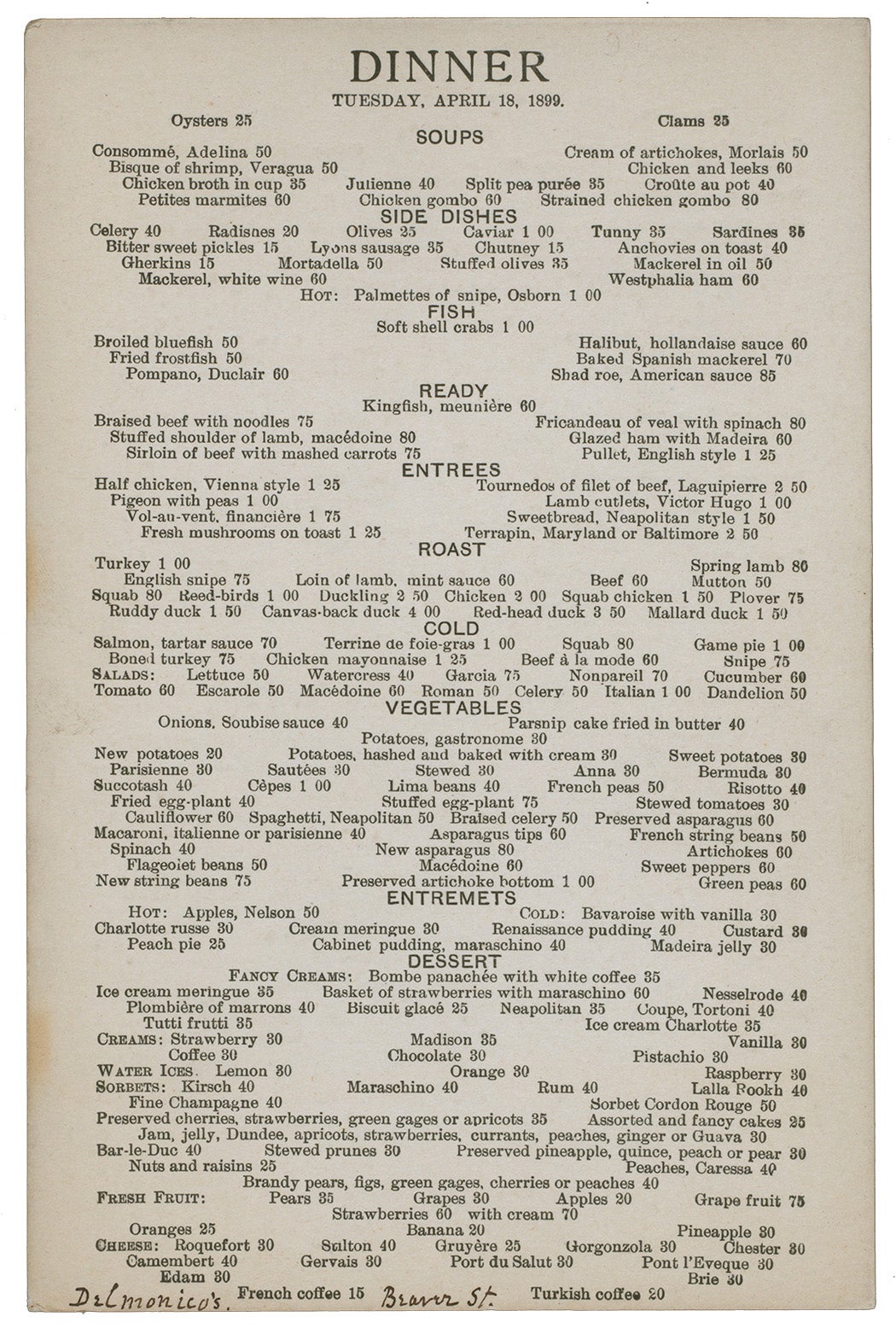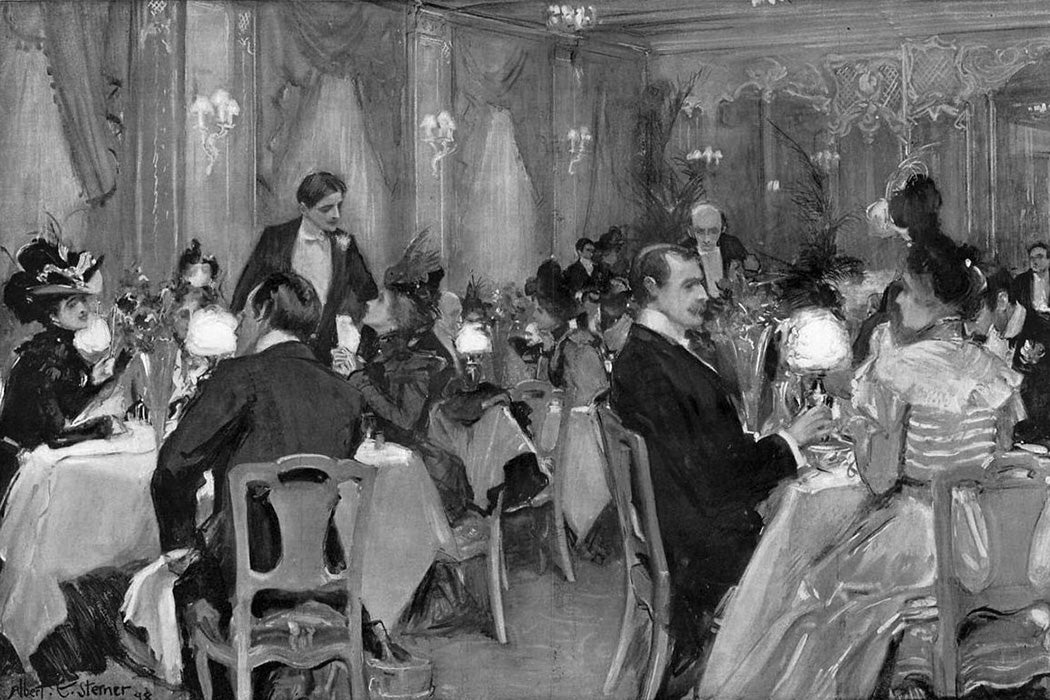COVID-19 is changing the way we dine out, but how such changes will transform the experience in the years ahead remains an open question. One thing we do know is that restaurants change over time. There’s a history to them. And historian Paul Freedman has been reading the menus from the dawn of the American restaurant.
“Menus,” Freedman writes, “offer a glimpse of how a well-off but socially uncertain elite sought to express culinary discrimination in the quasi-public setting of the restaurant, a French invention of the mid- to late-eighteenth century that did not take hold in the United States and Great Britain until well into the nineteenth.”
Freedman looked at menus from eighty-five American restaurants that existed between 1838—“the date of the first extant menu from Delmonico’s, generally considered to be the country’s first fine restaurant”—and 1865. In addition to the cuisine, he explains what we know about early dining out.
For one thing, it was fashionable for European visitors to complain about American food. Famous visitors like Frances Trollope groused that it was “abundant but not delicate” in 1832. Ten years later, Charles Dickens’s first trip to America was “a culinary disaster.”
Americans were also renowned for eating with great speed: Delmonico’s scheduled an average of eight to ten minutes per course for their fourteen-course meal. Dinner was served from 2 p.m. to 5 p.m. Food could still be had later in the evening, but choices were more limited.

It was unusual for men and women to dine together in early restaurants. “Unescorted” women were not generally allowed until the invention of the “ladies ordinary” in 1839. This was a separate dining space for women; in smaller establishments, it could be a separate table instead of a room.
Fancy dining was initially hotel dining—the “American plan” of hotel pricing included food. The European plan, charging separately for meals, was slowly adopted after 1844. Delmonico’s in New York and Antoine’s in New Orleans were the pioneers as stand-alone restaurant businesses. Service in American restaurants was “a la russe”—Russian style. Waiters, who were all male, brought courses in succession. This style was taken up earlier by Americans than by Europeans.
“Decades before the Gilded Age,” writes Freedman, Americans “demonstrated an extravagant, if to us somewhat alien, set of food preferences, preferences emblazoned on the period’s menus, a surprising number of which have survived.”
Macaroni au gratin, fricassee of chicken, baked beans and pork, macaroni a l’italienne, and oyster patties were the five most common menu items in Freedman’s survey. Macaroni, often in some variation of mac ’n’ cheese, was a staple of high-end dining. The distinctly American dishes of the day were canvasback duck and terrapin.
“Cuisine is, of course, notoriously resistant to objective measures of quality,” writes Freedman, and “many of our forebears’ food choices will strike us as less than congenial.”
Weekly Newsletter
Freedman’s appendix lists 928 entrees served at New York’s Fifth Avenue Hotel between 1859 and 1865. Nine variations on calf’s head. Fillet of beef and fish, but also chicken, duck, goose, green turtle, grouse, lamb, mutton, pigeon, pork, veal, and venison. Almost all of those meats could also be found hashed. Fried eel and six variations of frog, including “fried English style.” If you hungered for lamb fries (which are testicles), there were at least five ways they could be prepared. Many wild birds were on the menu, including plover with Champagne sauce, snipe in cases, and rice birds with toast. For the nose-to-tail crowd, there were thirteen different tripe preparations.
This abundance, which would only expand in the Gilded Age’s orgies of soup-to-nuts dining, seems to have been the name of the game even before the Civil War. And that’s no load of tripe.







